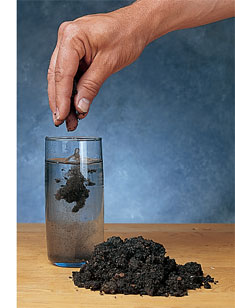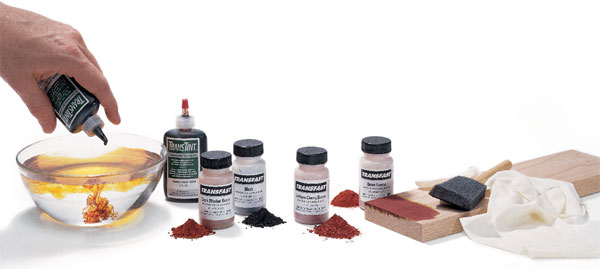
In September, I wrote that, while stain is often superfluous, especially on prime woods, it can be a lifesaver on plain or uneven woods. At the time, I promised I’d revisit the topic and offer a few tips on how to stain without making wood look muddy, fake, or painted. Well, today’s the day.
First, some basics. Stains can be colored with pigment, which is ground-up colored dirt, or with dye, which dissolves. Pigments are relatively large particles suspended in liquid, but dyes dissolve, becoming vastly smaller particles the size of a molecule. Here, size matters.
Dye
Flood dye onto plain poplar or alder, wipe it off, and you can change the color from boring tan to sparking red, crisp yellow, golden brown or even emerald green. And although the color changes, the look of the wood does not, because the tiny dye molecules color without hiding grain or character.
Try some yellow-orange dye the next time you come across a dull, grayish piece of walnut. It will add golden highlights and scrub out the gray, but it will still look like “natural” walnut, only of a better quality.
Pigment
At other times, pigments work best to make wood look like a better version of itself. Take the case of quartered “tiger” oak. This figured wood goes from pretty to outstanding after a quick swipe of asphaltum, a dark brown stain that packs lots of color without hiding natural beauty.
You can buy asphaltum as driveway or tree-pruning tar, or as a stain concentrate sometimes called gilsonite, but there’s an easier way. At least three commercial stains I know of, Minwax Jacobean, Varathane® dark walnut and Watco® dark walnut, contain primarily asphaltum.
Other large particle pigments do yeoman service bringing out grain patterns in large-pore woods, like ash or oak. Wipe off the pigment after application and what remains in the pores makes the grain pattern stand out decisively. Choose a commercial stain, like Zar or Varathane, that’s formulated with 100 percent pigment and no dye.
Some noble woods, like mahogany, which looks paler in the flesh than in the furniture store, benefit from a combination of pigment and dye. Start with a golden amber dye to give it warm highlights. Seal the dyed wood with a thin coat of finish, then apply a dark reddish-brown pigmented stain, and wipe it off. The dark pores and lighter background create contrast that makes the wood come alive.






